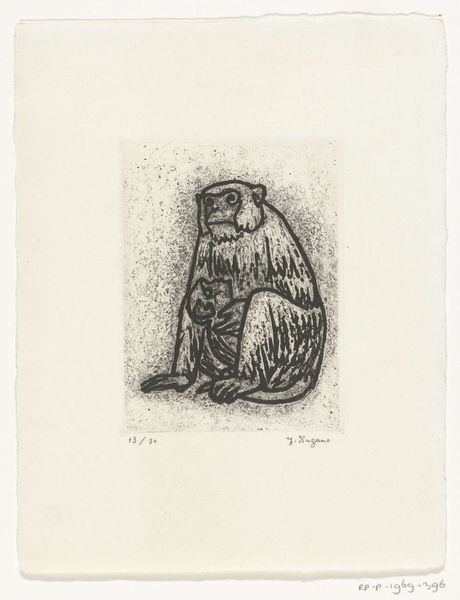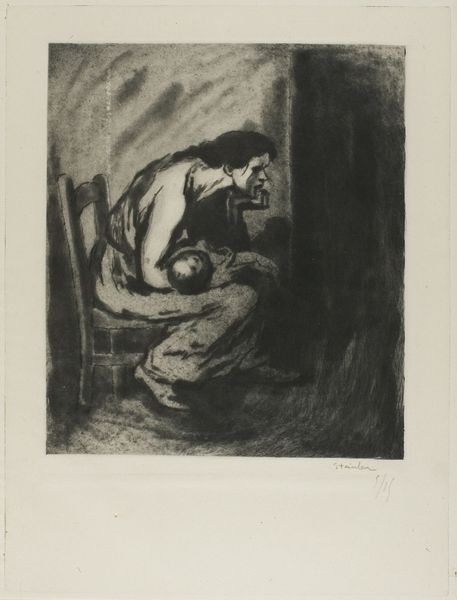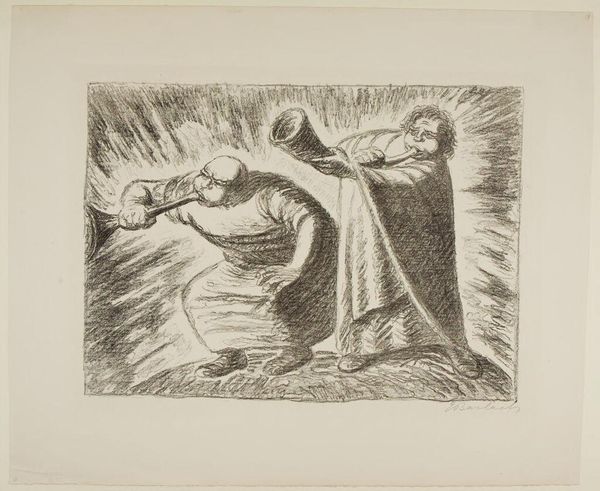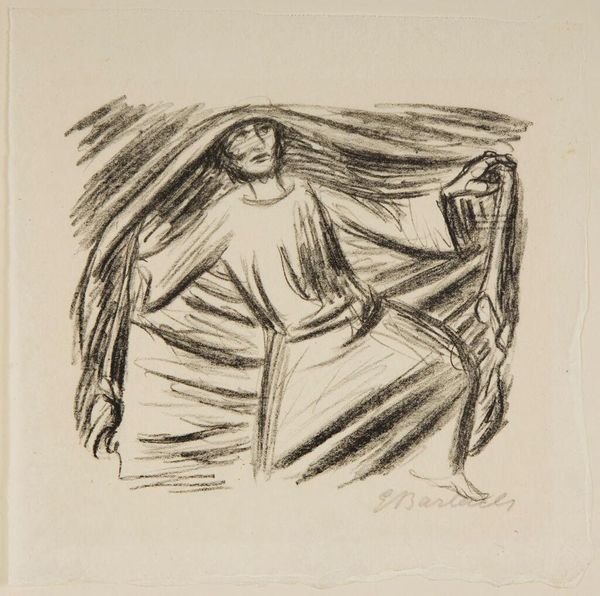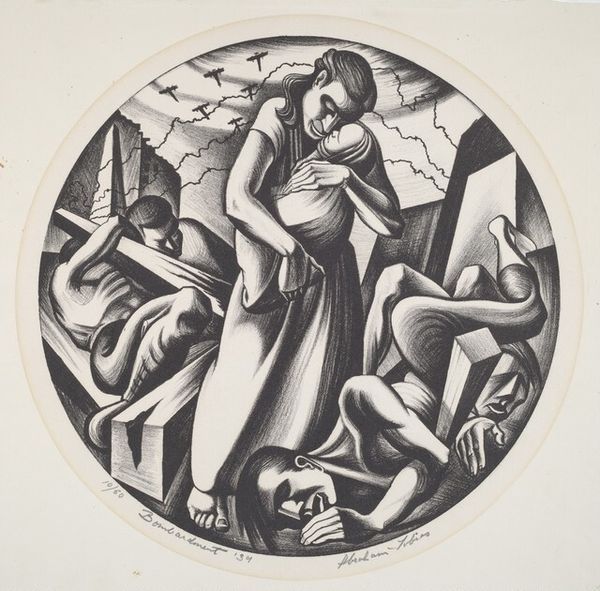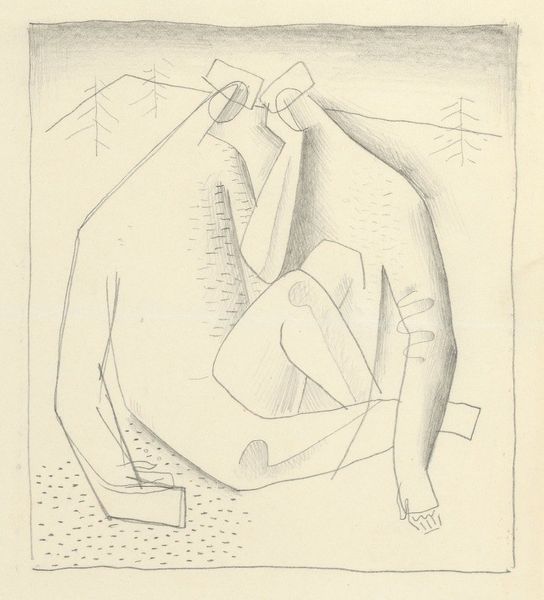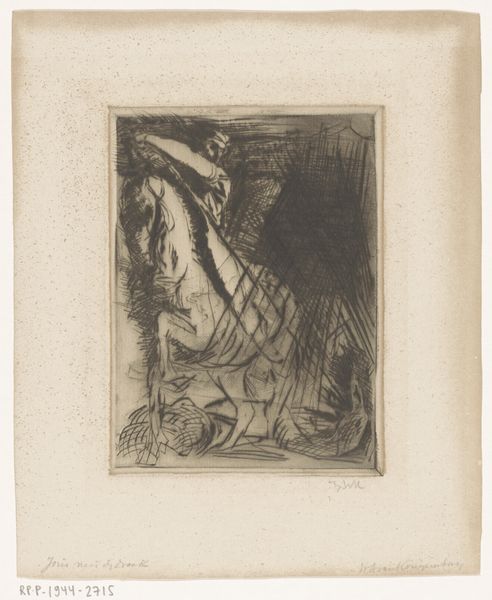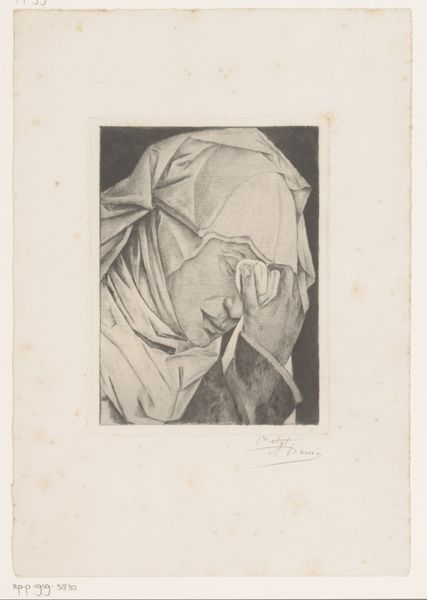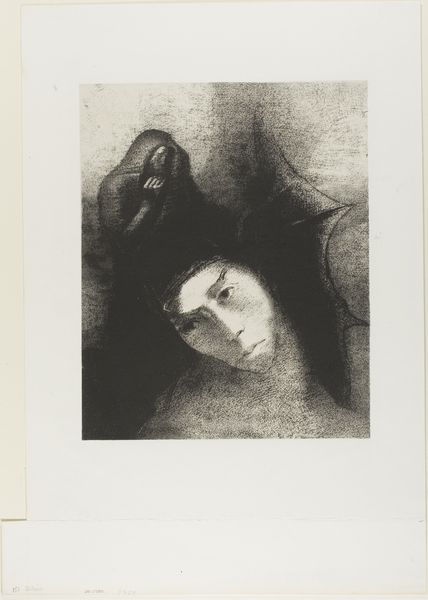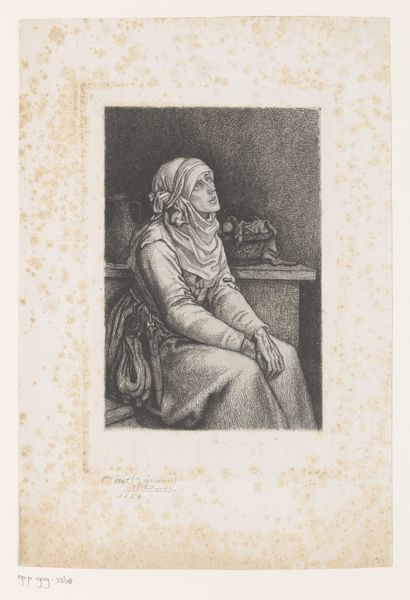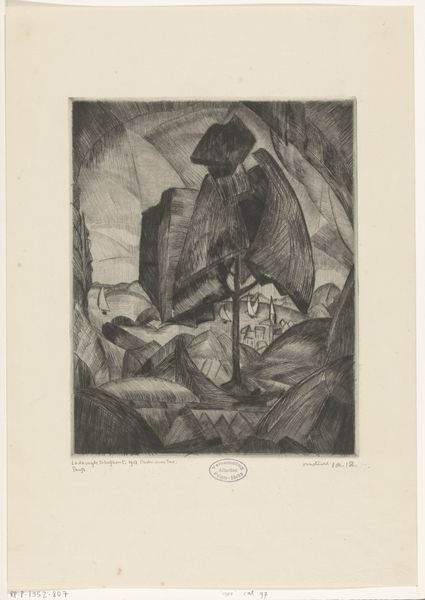
drawing, print, etching
#
portrait
#
drawing
# print
#
etching
#
figuration
#
portrait reference
#
pencil drawing
#
mexican-muralism
#
portrait drawing
#
realism
Copyright: Public domain
Curator: Orozco's etching, "The Franciscan," created in 1929, certainly grabs your attention, doesn't it? Made from etching and drypoint, which give it this unique texture, it makes you wonder about its message, right? Editor: Absolutely. It's quite stark. The skeletal figure being embraced by the Franciscan is very powerful, even disturbing. Given its themes and his other works, how do you read Orozco’s “The Franciscan"? Curator: Well, let's consider the materials and process. Orozco chose etching and drypoint, printmaking techniques that allow for nuanced tonal variations through the controlled erosion of the metal plate with acid and burrs from the drypoint. Why did he elect printmaking for such a loaded scene? It's likely got a relationship with its wide distribution, bringing it into more homes, no? Editor: So, you're saying the choice of printmaking speaks to a desire for wider dissemination, implicating a social or political intention behind depicting such visceral suffering? Curator: Exactly! Orozco’s "The Franciscan," I would argue, prompts questions around labor and how material realities impacted individuals during times of conflict, the Mexican Revolution which was concluded nearly 10 years before. How else could you describe the implications of printmaking used for Orozco's time period? Editor: Well, it allowed for broader engagement with social issues which directly spoke to mass labor exploitation during the reconstruction of Mexico post-revolution... it also serves as a great testament to material production, so you read more from an analysis centered on making! It also helps deconstruct some notions of fine art! Curator: Precisely! By examining the material conditions of its making and distribution, we start seeing this potent print not just as a religious image but a stark commentary on exploitation and spiritual sustenance during times of hardship and even today, issues such as the divide between rich and poor. Editor: I never would have thought about Orozco using materiality that way! This discussion has really broadened my perspective! Thank you.
Comments
No comments
Be the first to comment and join the conversation on the ultimate creative platform.

